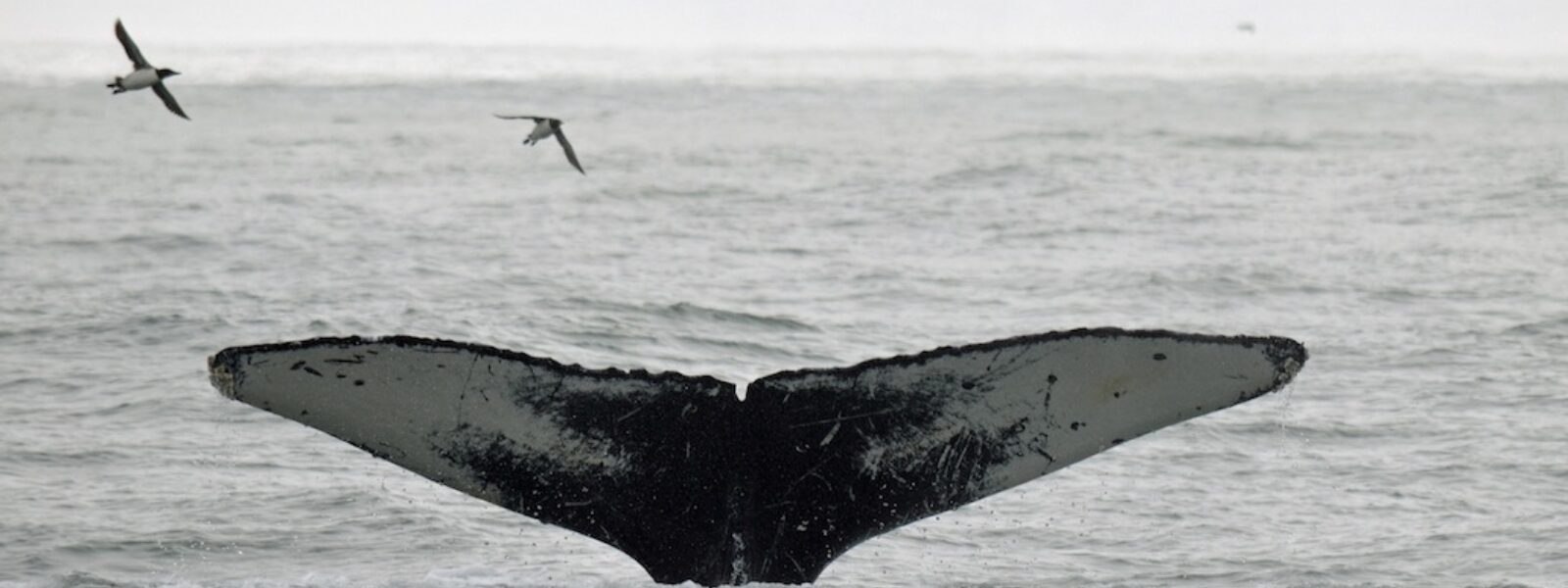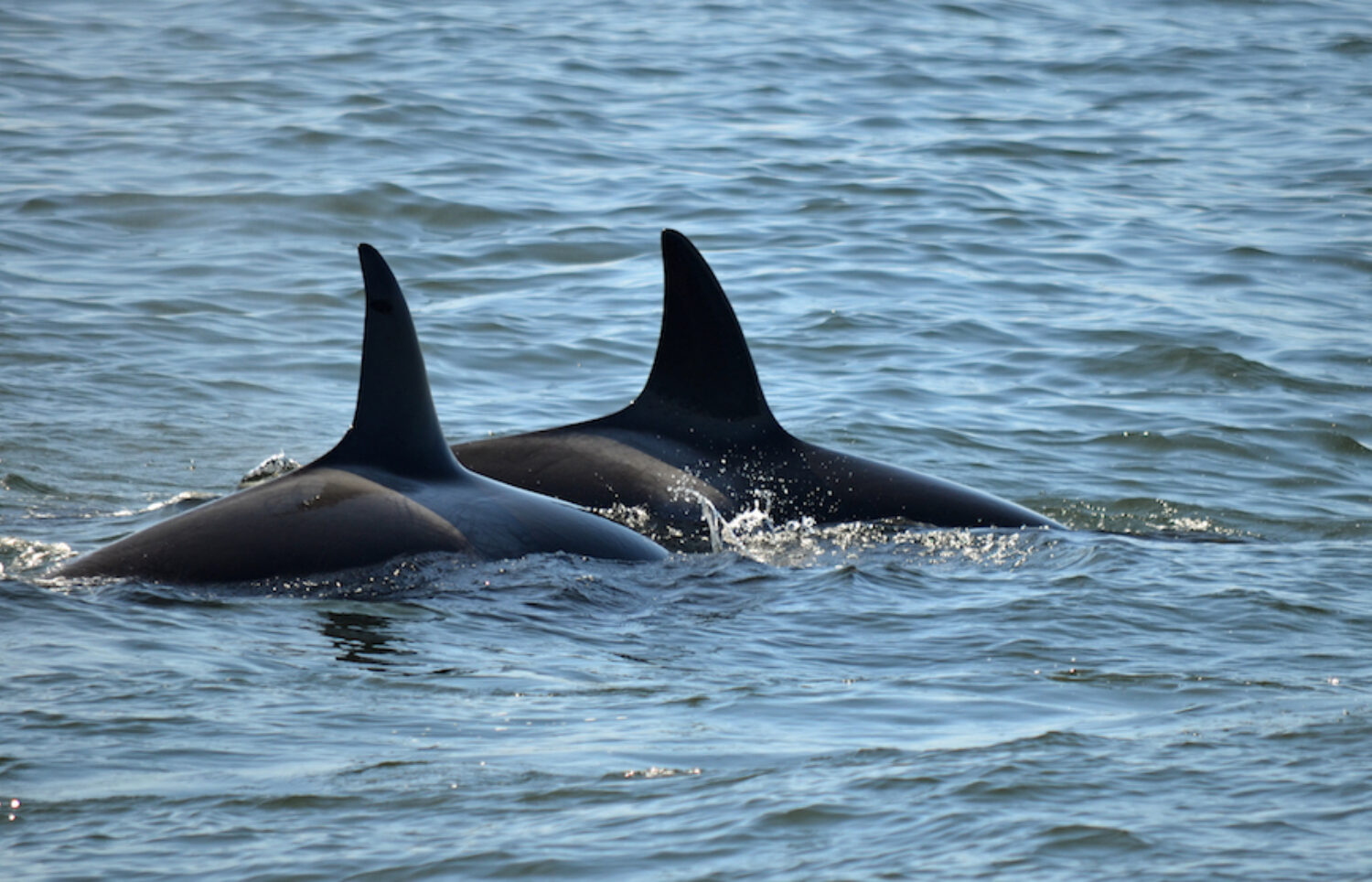
Whales Through the Lens of Photo Identification
By Rosemary Ellis
Whales confront a multitude of challenges - habitat degradation, pollution, climate change, commercial whaling, ship strikes, and entanglement in fishing gear to name a few. To address these pressing issues, marine biologists are employing photo identification techniques, enabling the tracking of individual whales within populations. Through the lens of photo identification, whale scientists delve into the intricate lives of individual whales within populations, unraveling invaluable insights into their life histories and facilitating targeted conservation efforts.
Delving deeper into the social tapestry of whale populations is not just a scientific pursuit, but a critical endeavor in mitigating the impact of human activities. Meticulously tracking individual whales enables scientists to gauge population health, identify looming threats, and enact more precise conservation measures.
Much like humans with our unique fingerprints, each whale population carries distinctive features that can be photographed and compared with similar photos. Gray whales bear the imprints of barnacles in white spots and white scars on their dark gray skin, while right whales have unique callosities (raised tissue) on their heads. The seemingly straightforward technique of photo identification provides rich information, with some whale individuals being observed closely for more than four decades. This method, combined with complementary approaches such as vessel-based and aerial surveys, use of drone photography and captures of whale breath to check for diseases, along with acoustic monitoring, enhances the precision of population size estimates and overall health of the whales.
In the Pacific Northwest, the Southern Resident Killer Whales (SRKW) have gained global attention due to meticulous identification and tracking. Individual orcas are distinguished through natural markings, and variations in dorsal fin shape, and their unique saddle patches just behind the dorsal fin. The Center for Whale Research photographs these unique physical characteristics for visual identification, enabling precise annual population censuses. Virtually that entire orca population has been photographed and cataloged.

Two orcas photographed in Monterey Bay, CA. This photo shows the white "saddle patch" just behind the dorsal fins. Photo Credit: Mark J. Palmer
In July 2018, an orca from the SRKW population’s calf died, and, while orcas have been observed carrying their dead calves around for a day or two, this orca carried her calf around on her rostrum for 17 days. With photo identification, researchers knew this orca was Tahlequah. In September 2020 they identified that she gave birth again – this time her calf survived. Thanks to years of photo identification, they also knew her entire family structure.
On the East Coast of the United States individual humpback whales have been tracked since the 1970s. Allied Whale, based in Maine, has played a pivotal role in advancing photographic identification techniques. The North Atlantic Humpback Whale Catalog, created by Allied Whale, contains information on more than 11,000 individual whales from various feeding and breeding/calving grounds. Fluke patterns and scar markings on the underside of the fluke, visible when a humpback dives, are key identifiers, with each whale assigned a unique number and sometimes a name in the catalog. With knowledge of North Atlantic humpbacks’ migration patterns all along the East Coast of the US, individuals can be tracked in the different ocean areas using photo identification. The far-reaching migration patterns allow researchers in different areas to contribute to this database, creating a collaborative effort to track individual humpbacks and the population through time and space.
Beyond the realm of professional researchers, citizen scientists can play a crucial role in whale identification and tracking. Platforms like Happywhale encourage enthusiasts to submit photos, taken, for example, on whale watching cruises, and contribute to one of the largest resources for individual identification of marine mammals.
Citizen scientists can contribute significantly, as exemplified by Maurina De Wulf's whale-watching excursion in the Dominican Republic. Like many of us, she is a whale enthusiast, so she snapped fluke photographs of the whales they encountered that day and later submitted them to the North Atlantic Humpback Whale Catalog. Among her submissions was na3044, her photograph of a whale not sighted since 1980! This revelation spanned 35 years and 2,000 miles, from Bonavista Bay off Newfoundland to the Dominican Republic.
Ultimately, the art of identifying individual whales through photo techniques not only enriches our understanding of them but also serves as a powerful conservation tool. As we collectively strive to protect marine mammals and their habitats, the active participation of both researchers and citizen scientists remains indispensable.
****************************
